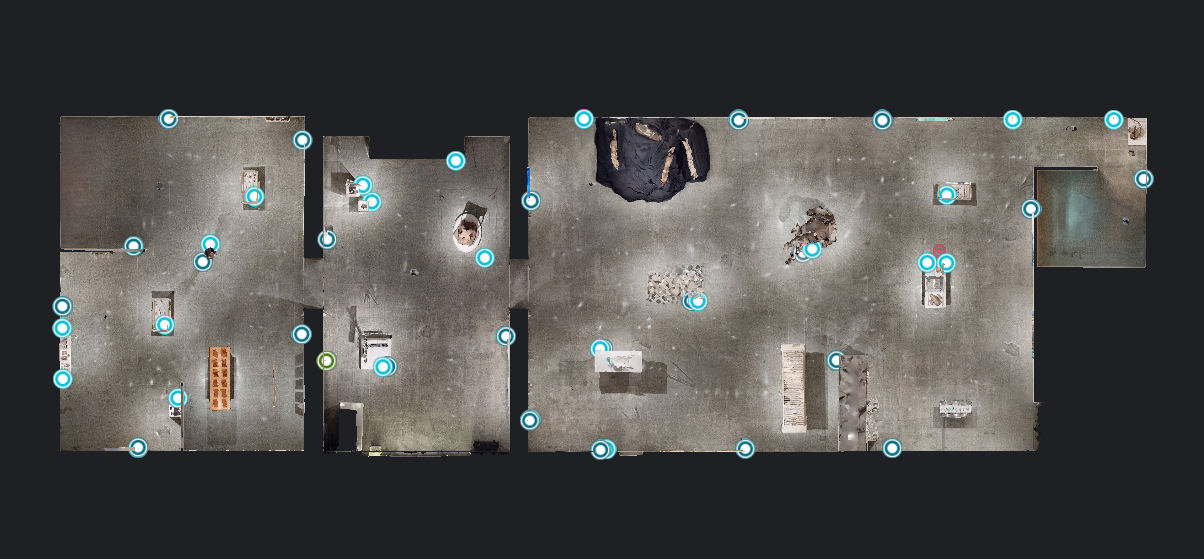 Bonnie Sklarski, Shoots, 2003
Bonnie Sklarski, Shoots, 2003
State of Nature: Picturing Indiana Biodiversity
Olivia Ann Carye Hallstein
It's quite a treat to see an art exhibition (online), which encourages an immersive experience at the interstice of the sciences and the arts. State of Nature, on view at The Grunwald Gallery at Indiana University in Bloomington through November 18, 2020, presents artworks juxtaposed with artifacts including fossils and extinct taxidermy animals, along with video works and artist interviews. Many of the artist’s processes are embedded in years of observation and interaction with their Indiana environs. For example, Bonnie Sklarski's painting titled Shoots (above), is a study of a creek embankment, and Maria Whiteman's installation titled Living with Mycelia (below), presents photography as scientific observations of fungi, alongside live specimens, and to educate the importance of the role of mycelia within the forest ecosystem.
 Maria Whiteman, Living with Mycelia, 2020
Maria Whiteman, Living with Mycelia, 2020
The artists included in the exhibition successfully express how to present artistic observations to a public, including ecoartspace members Susannah Sayler and Edward Morris. Also included are Suzanne Anker, Joianne Bittle, Lucinda Devlin, Dornith Doherty, Margaret Dolinsky, Roger P. Hangarter, Kate Houlne, Dakotah Konicek, John McNaughton, Martha MacLeish, David Morrison, Joyce Ogden, Ahmed Ozsever, Casey Roberts, Bonnie Sklarski, Gene Stratton-Porter, Mark Tribe, Caleb Weintraub and Maria Whiteman.
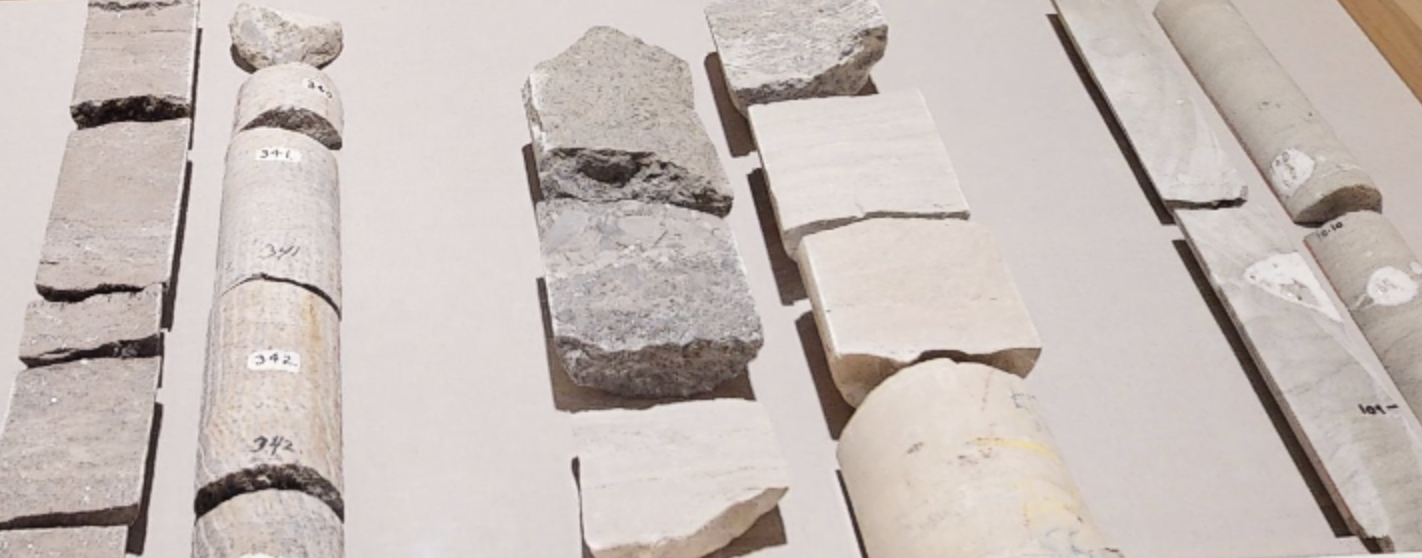
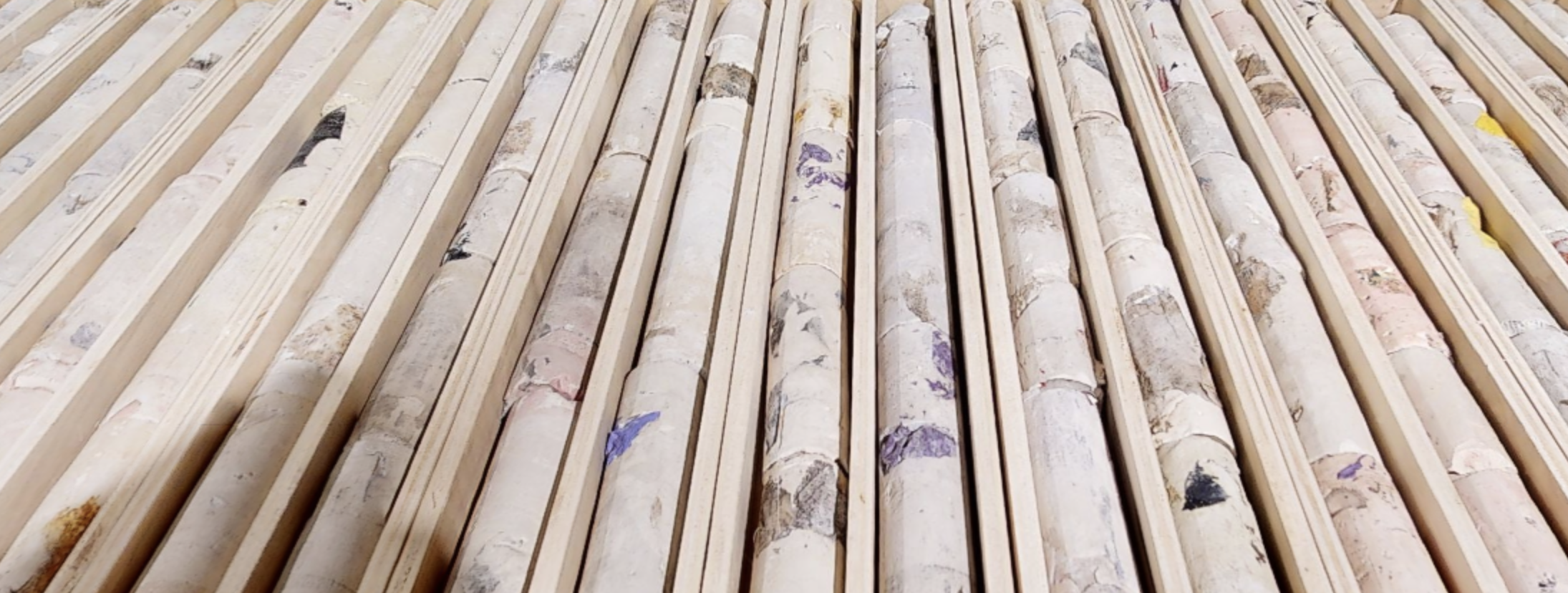 Geological cores above and below Ahmed Osever's Shallow Cores, 2020
Geological cores above and below Ahmed Osever's Shallow Cores, 2020
 Joyce Ogden, Heaven and Earth, 2016 and Mound Calendar, 2017
Joyce Ogden, Heaven and Earth, 2016 and Mound Calendar, 2017
The whole exhibition is wrought with fantastic samples and reflections on the natural world in Indiana: its disappearances, like the Jefferson Ground Sloth full skeleton, and the ecological histories that are present in the environment. The process of observation is presented through scientific geologic cores that are used to draw conclusions about the history of a land, presented in close proximity to artistic interpretations. Ahmed Osever recreates stylized core samples from an industrialized environment in Shallow Cores (above). These juxtapositions tell the stories of environmental and human impacts, as well as the overlapping processes between the sciences and many art practices. An incredible example of this was Joyce Ogden’s work titled Heaven and Earth and Mound Calendar (above). These works are the result of a major lifestyle change and deep interactions with the soils in southern Indiana where Ogden lives and where she has built her studio. Though Joyce’s garden soil is not the best for planting, she uses its material properties to describe a cyclical calendar, one that revolves around the moon and changes each month to reflect Native spiritual practices derived from the lands she currently lives on.
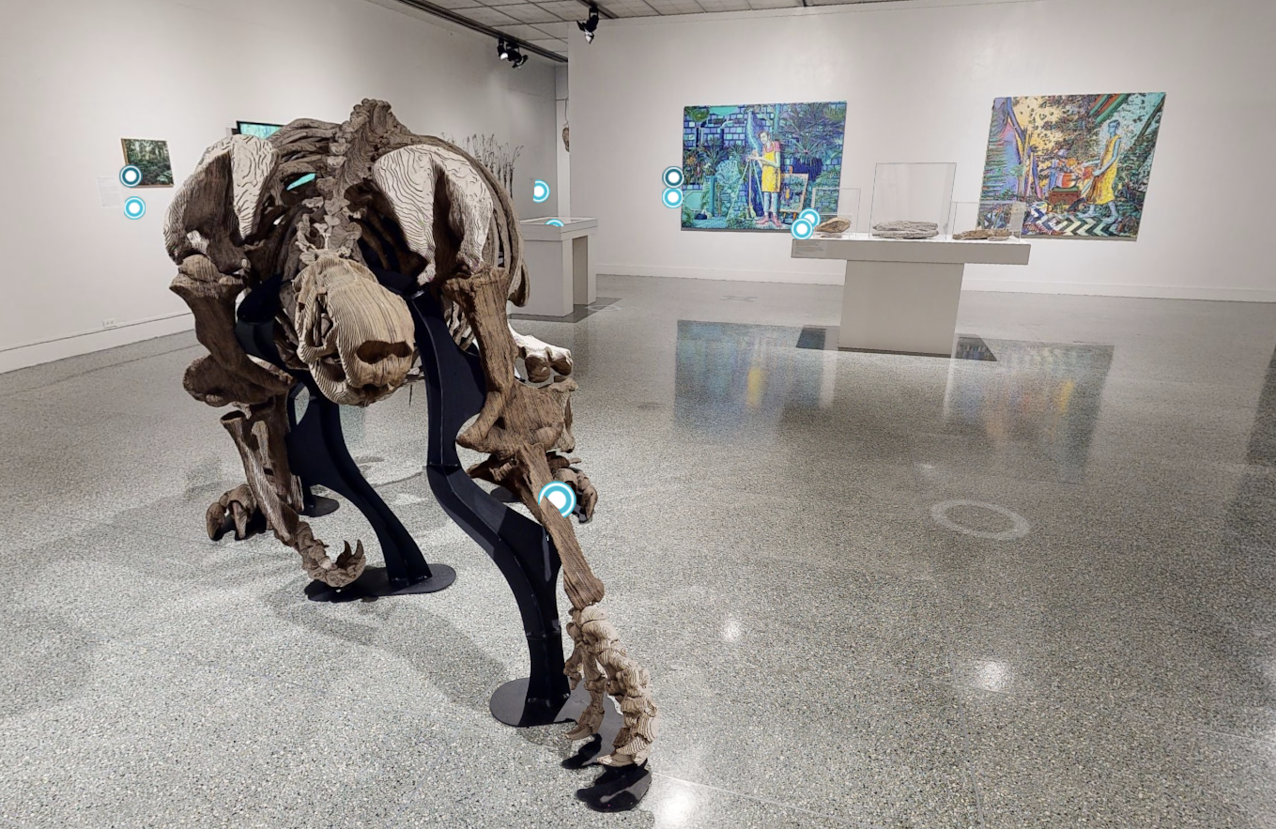 Matterport 360 snapshot of sloth and Weintraub paintings
Matterport 360 snapshot of sloth and Weintraub paintings
The works located in the far right gallery (above) embody an exchange between observable environment and expressive output. Viewers are presented with geological cores that recount the thousands of years of history even before humankind set foot in Indiana. Next, dried plants and wasps nests that are, arguably, nature’s artworks. Two expressive and surreal scenes painted as hypothetical realities by Caleb Weintraub, are stand out with their cool tones and thick paint representing a human-built environment overrun with plants. These images embody the essence of the exhibition: a vision or meditation on how the arts and scientific observation can merge to compliment each other, combining expression and observation of the environment around us, therefore creating both proof and idealism.
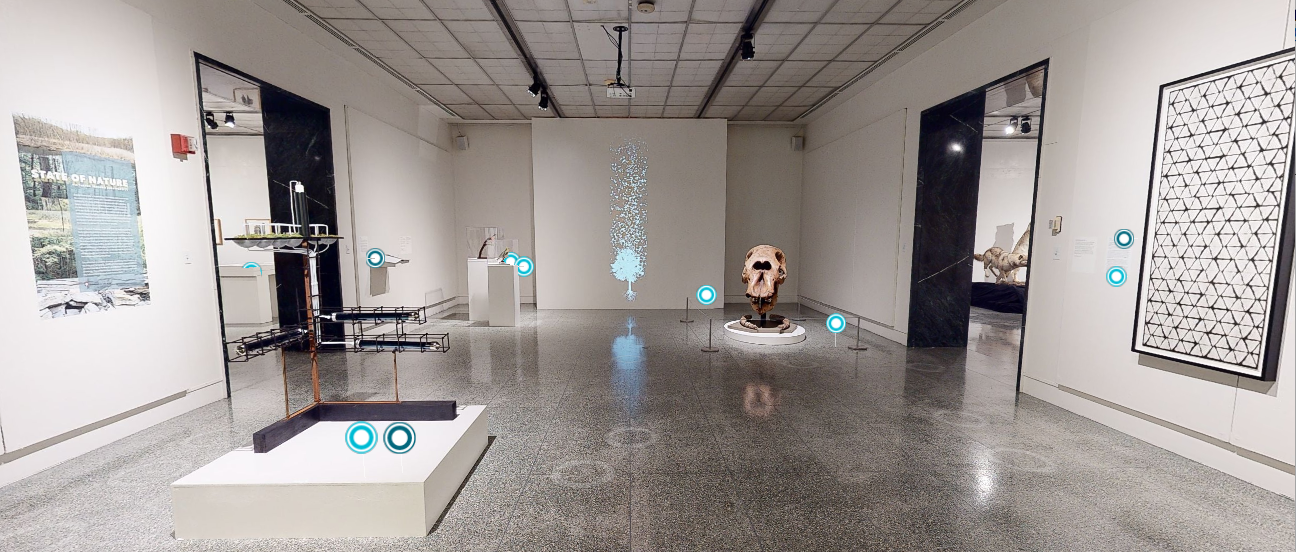
Saylor/Morris, Eclipse, 2014 (far wall and below)
This combination is especially relatable in the work of Saylor/Morris, located in the center space (above), whose mesmerizing video projection Eclipse presents a flock of birds which become the growing leaves on a tree that then ascend into the atmosphere. One could read this work as both the moment of the Holocene era, where there was maximum biodiversity on the planet prior to climate change, but also as the growing human population and its effects as overcrowding forces an ascension to heaven for many species.

A fantastic example of both the collaboration of the arts and the sciences as a meditation on the place, known as Indiana—the State of Nature: Picturing Indiana Biodiversity provides a platform for reflection for the future of environmental art. It is a warning and a celebration as stated in the exhibition introduction, “With the rapidly growing urbanization and pervasive reliance on technology, humanity is becoming more and more alienated from the biological system we are part of. Our connection to our ecosystem has become far more tenuous and many Hoosiers have become content to view nature virtually. Many also think that to see nature it is necessary to travel to the type of “exotic” locations often featured in “nature” shows on television. The growing detachment of humans from the natural world has become known as ‘nature deficit disorder’.”
Nature stands just beyond our doorsteps, and now Indiana’s examples on our computer monitors. State of Nature has presented an engaging perspective on how to provoke a cure.
The exhibition can be viewed online in Matterport 360 format HERE.
